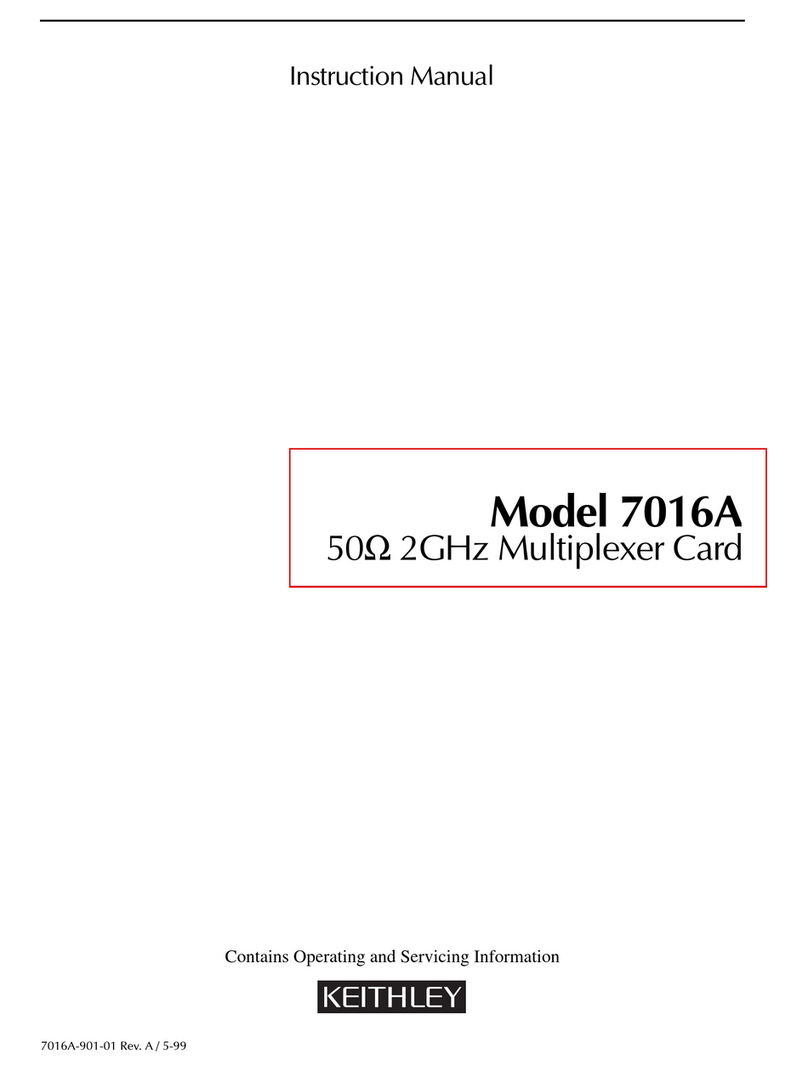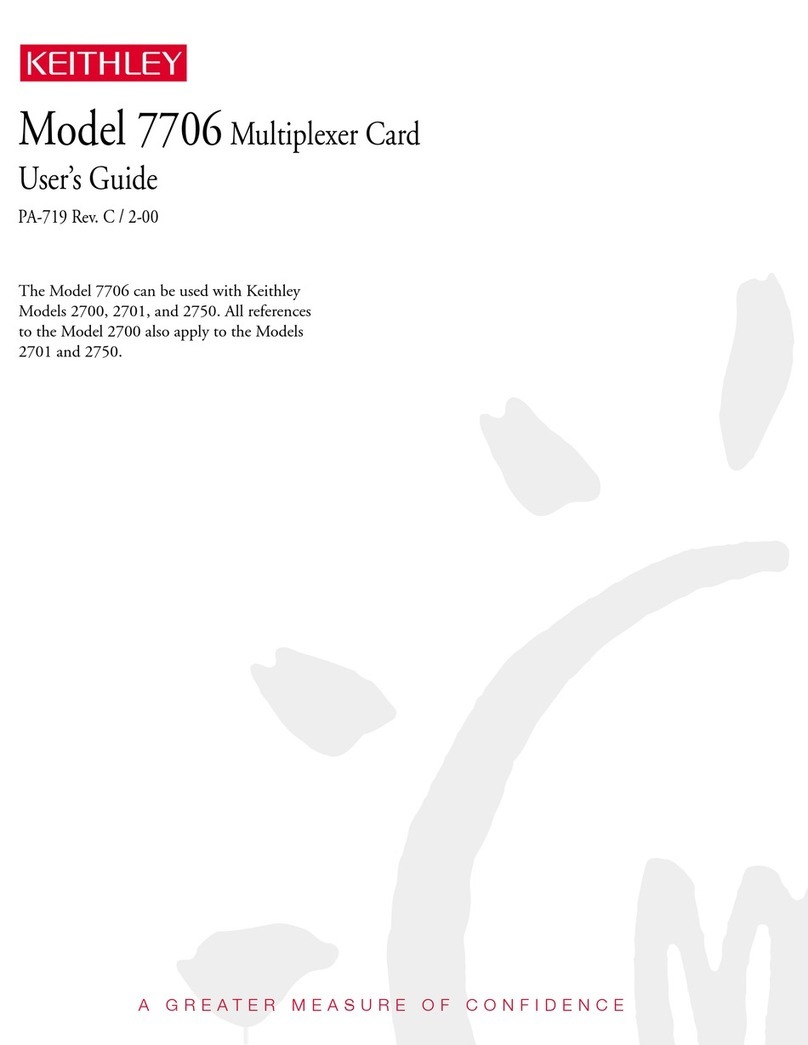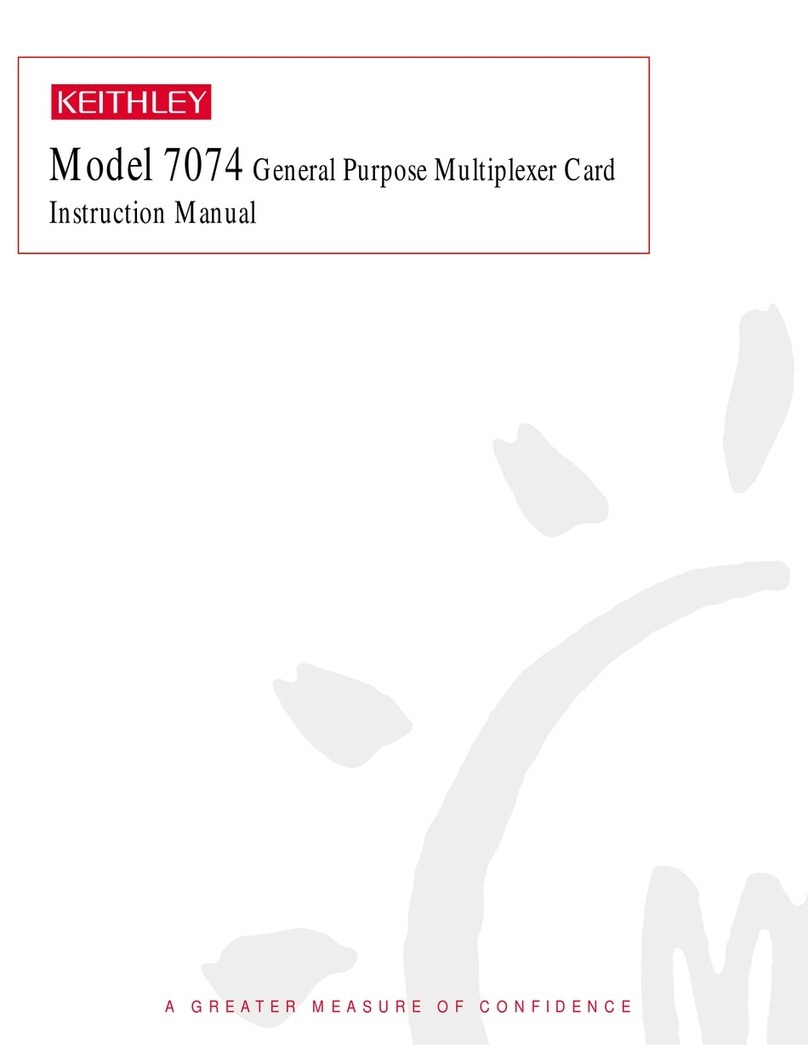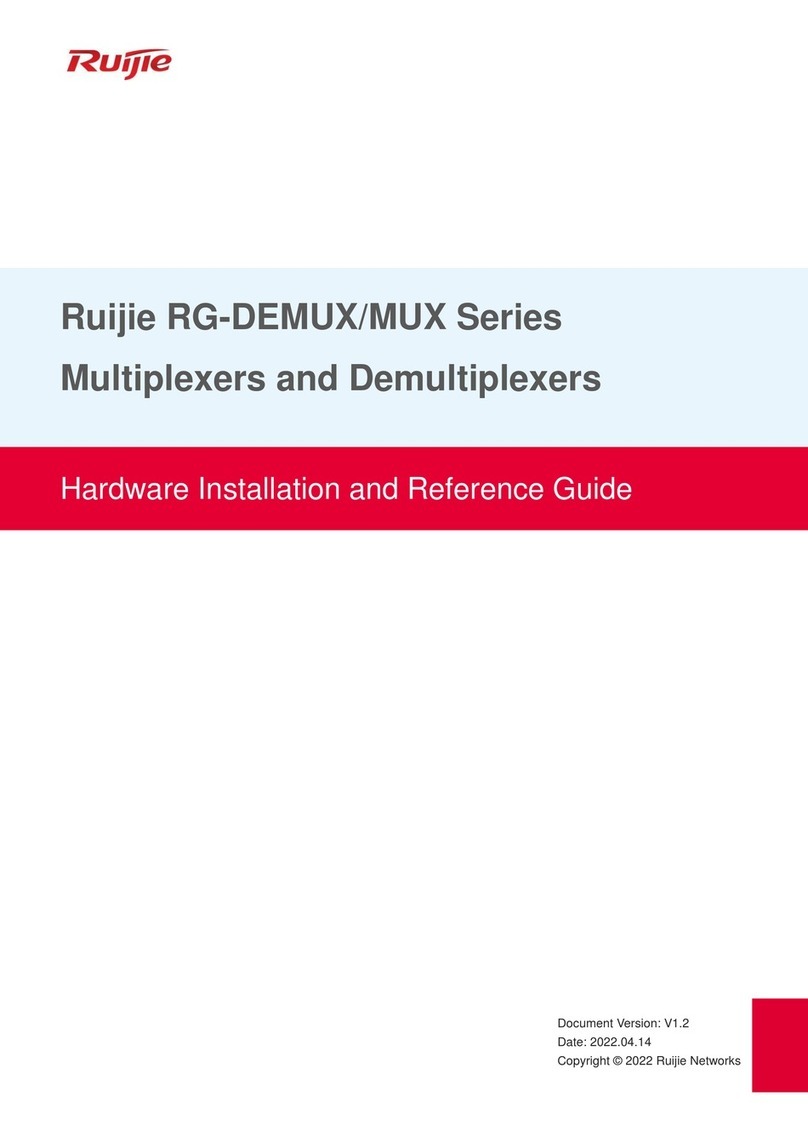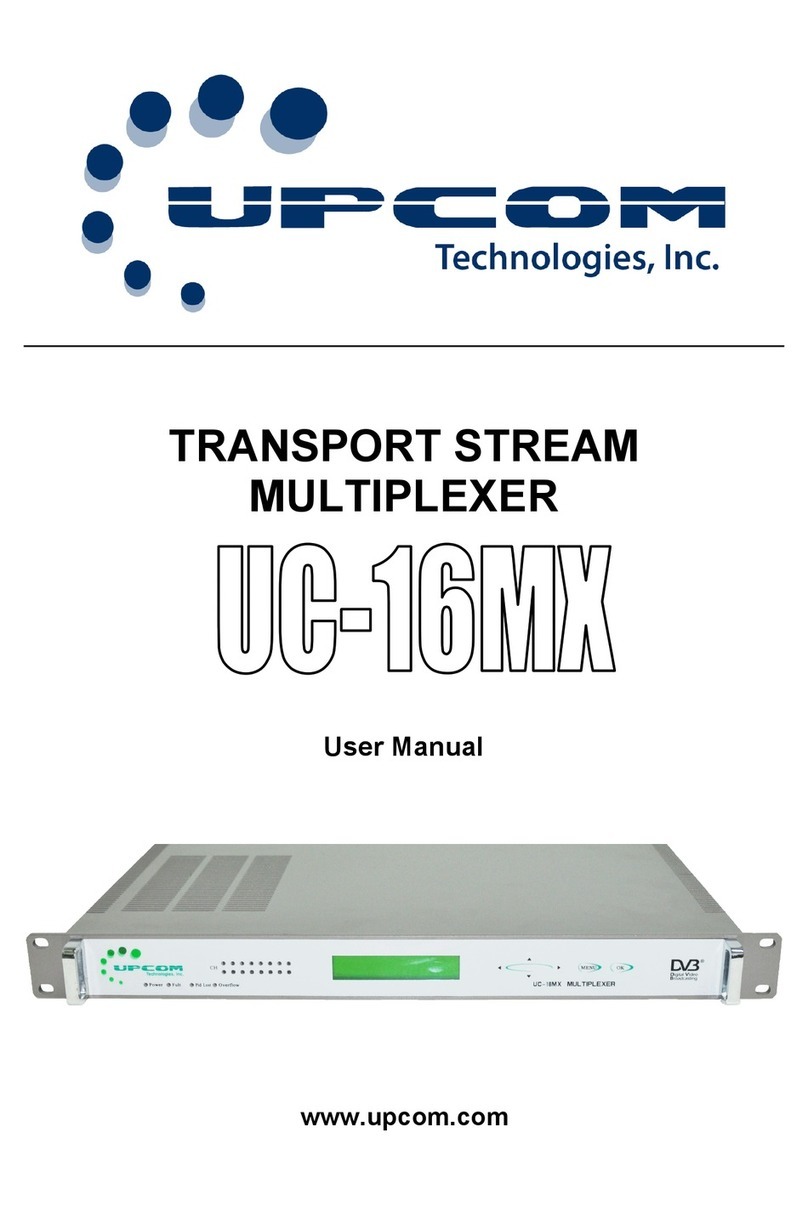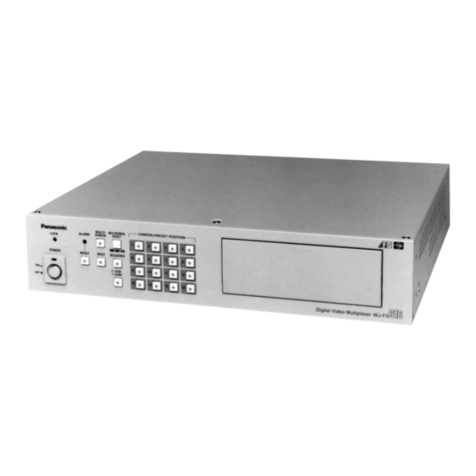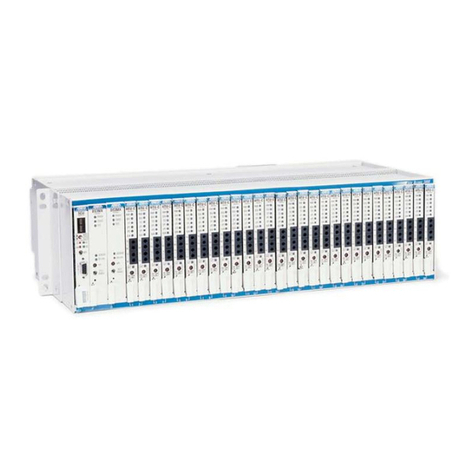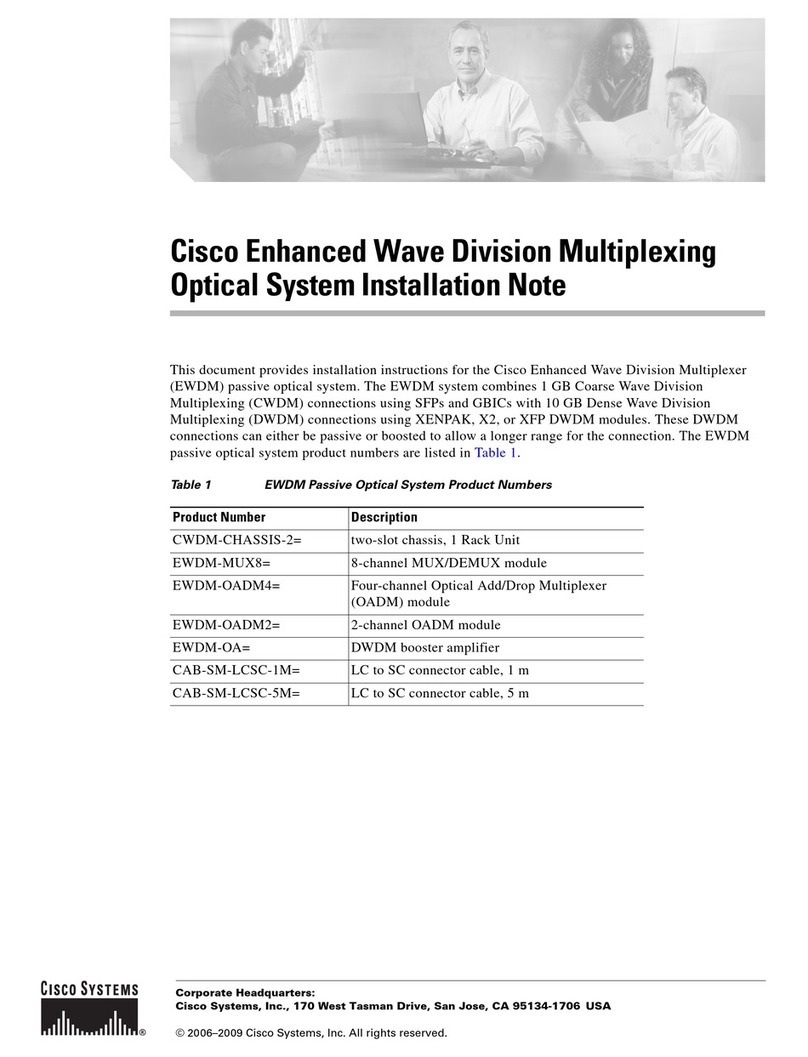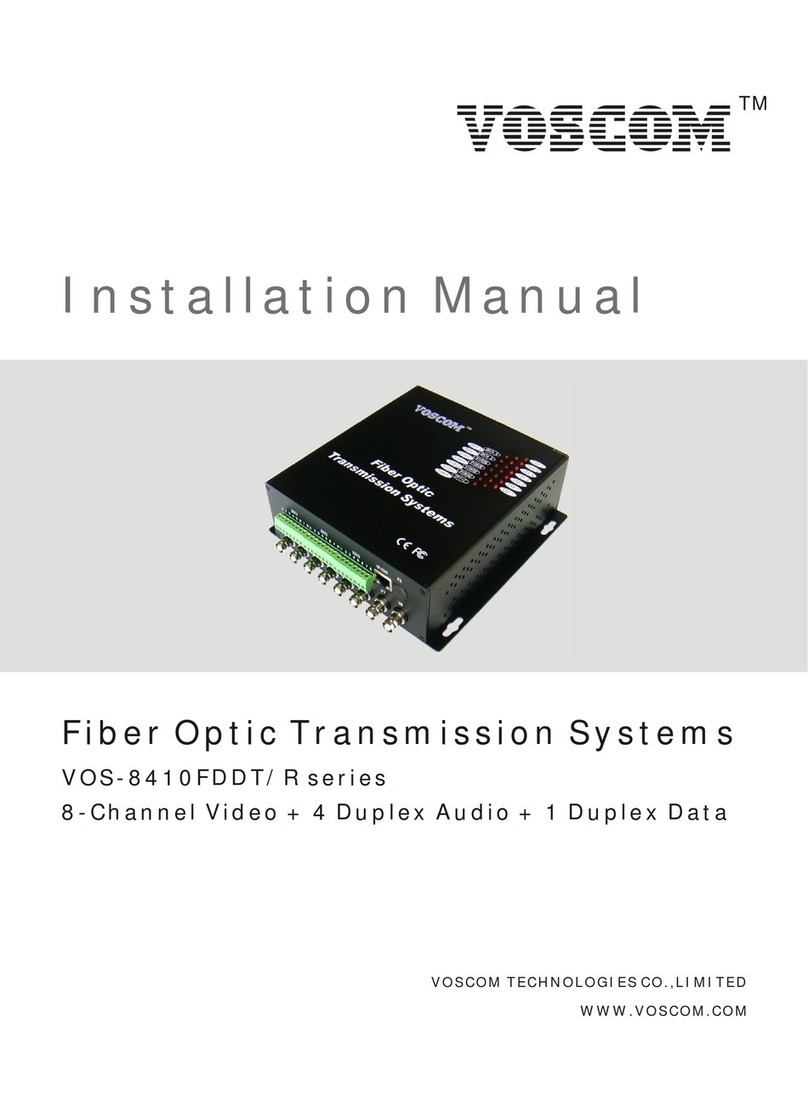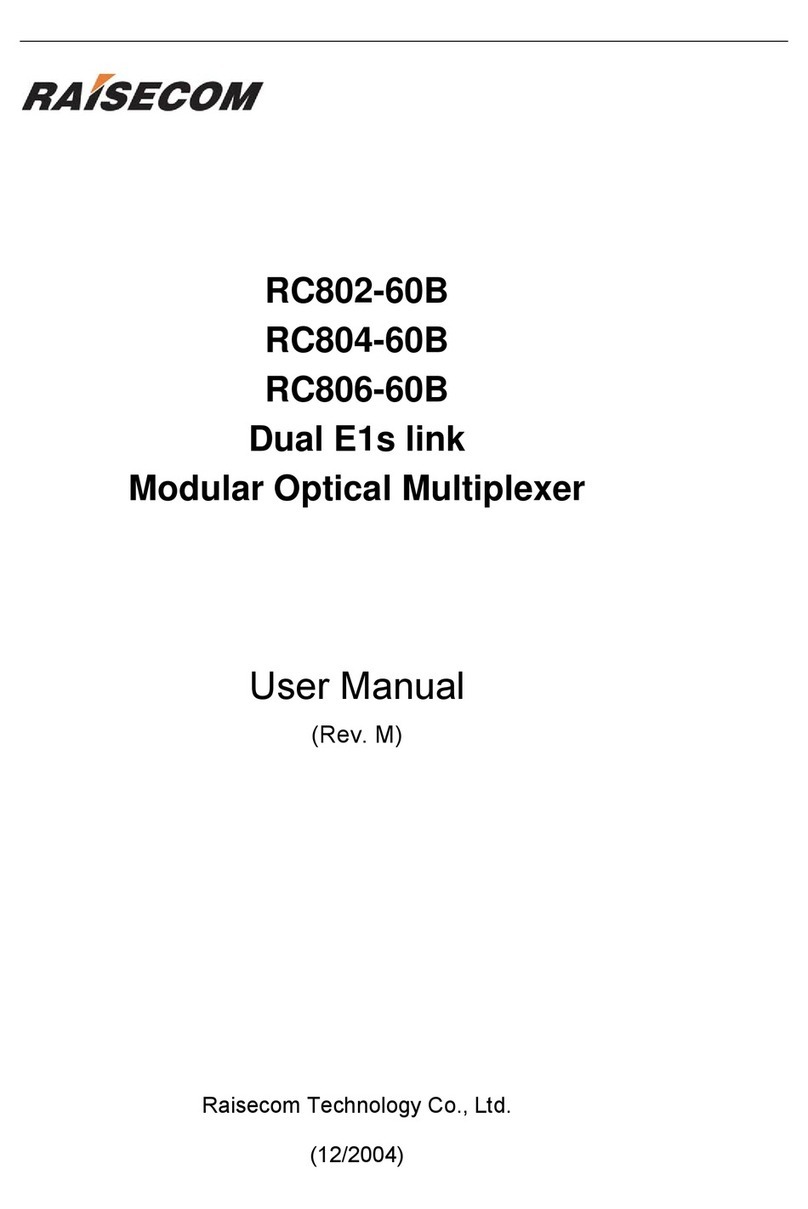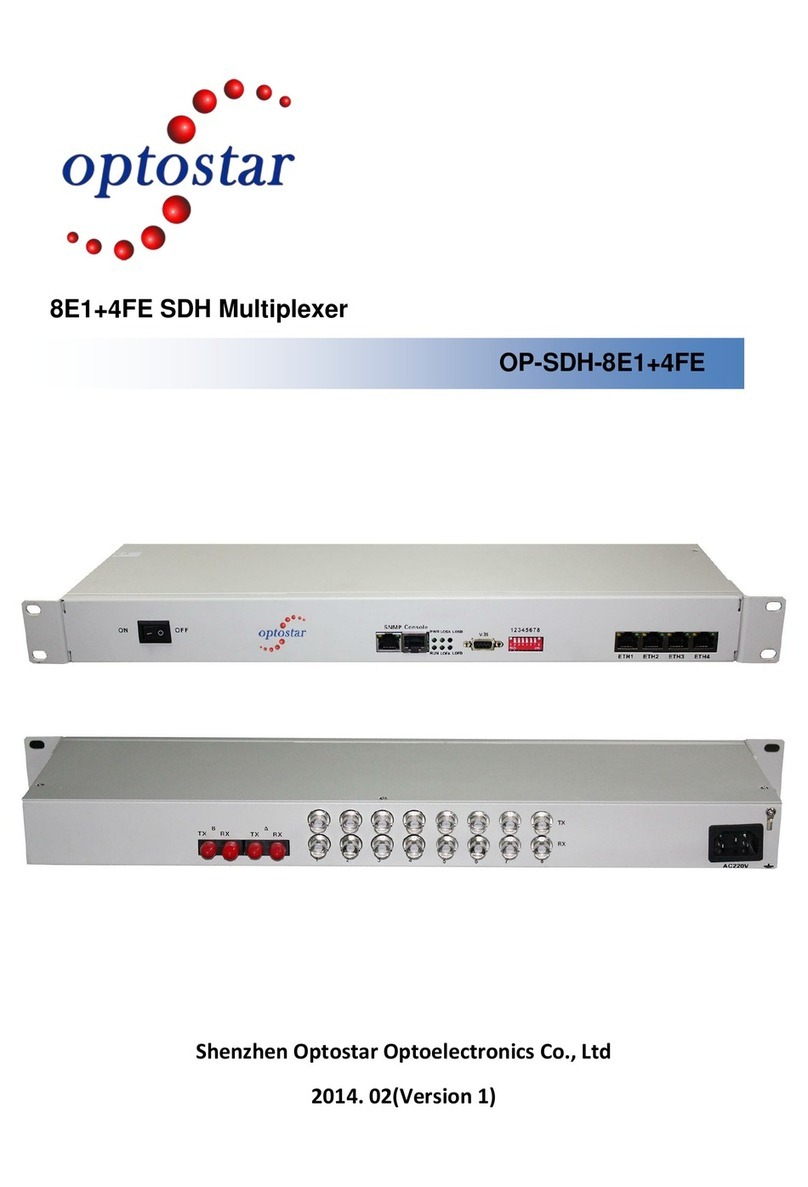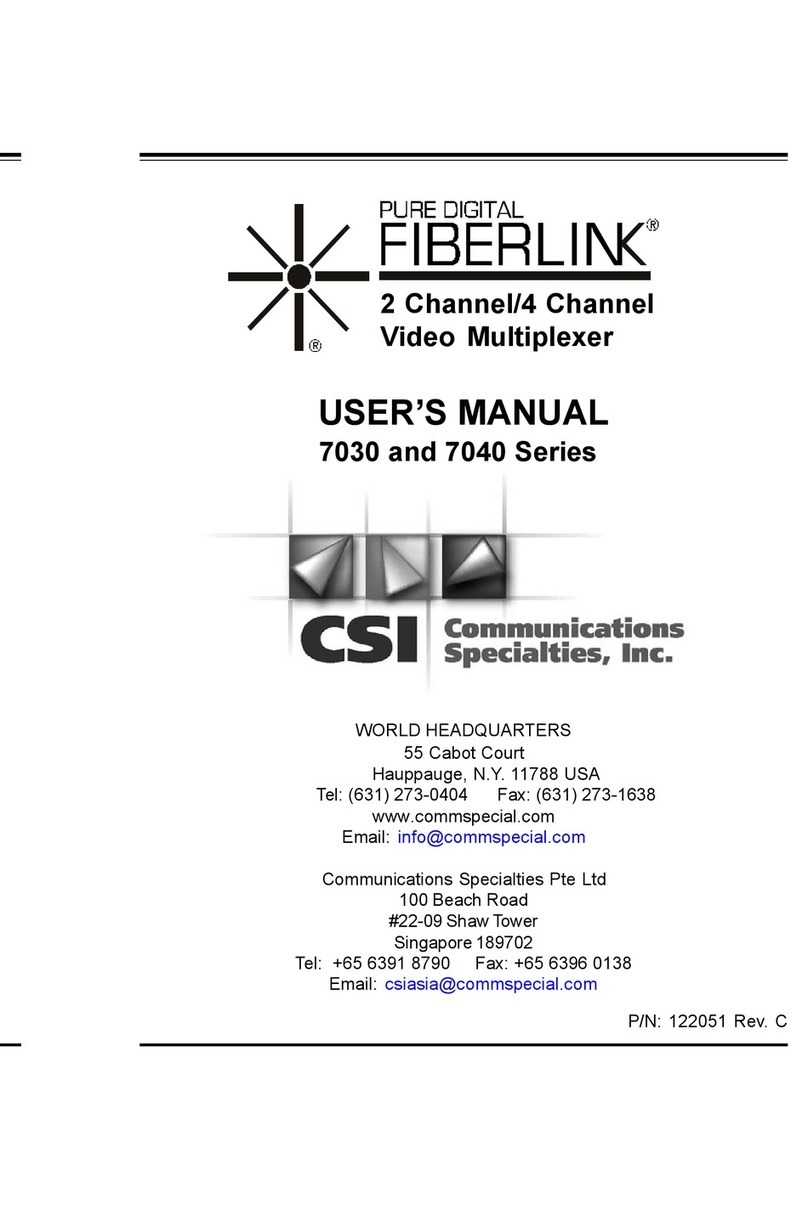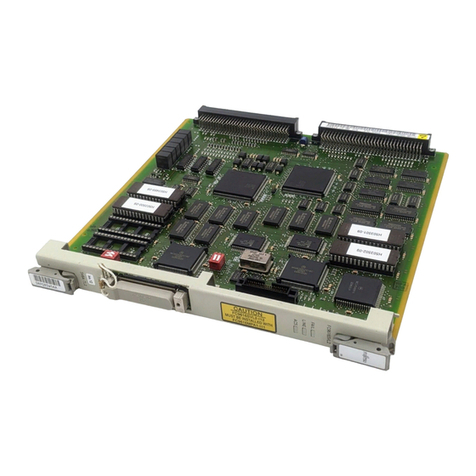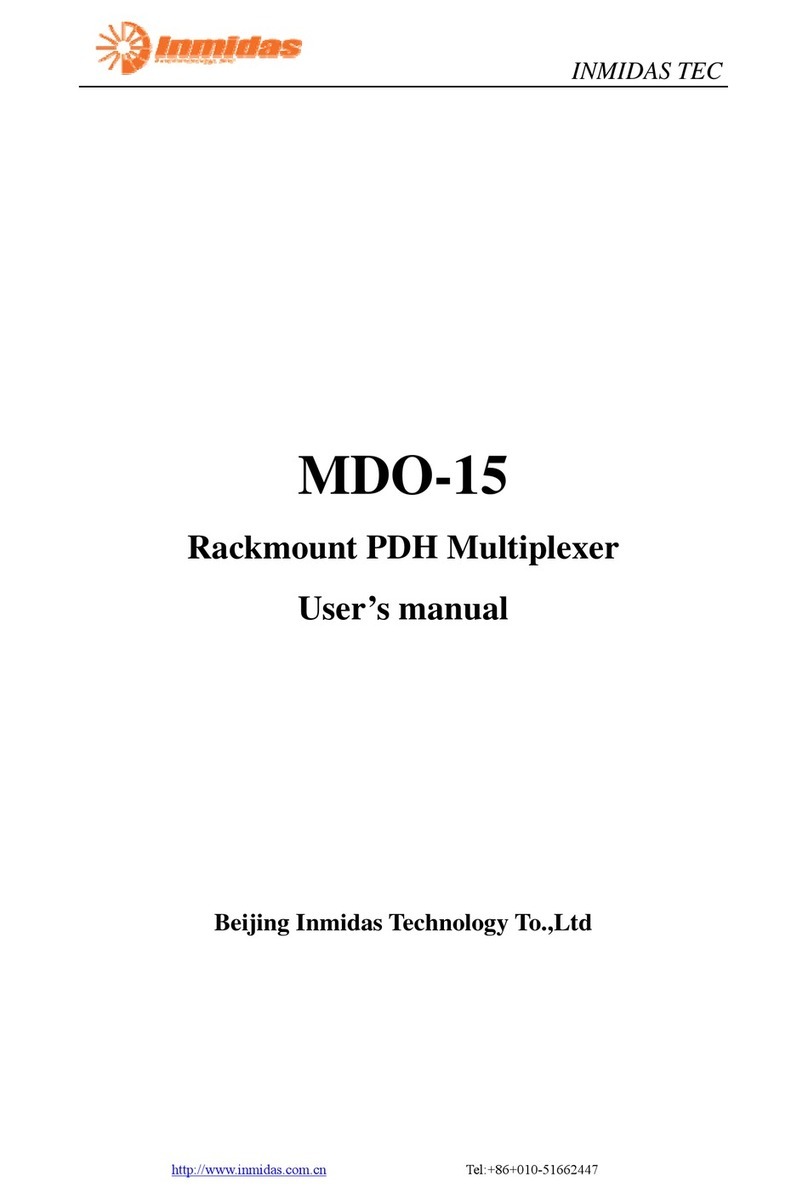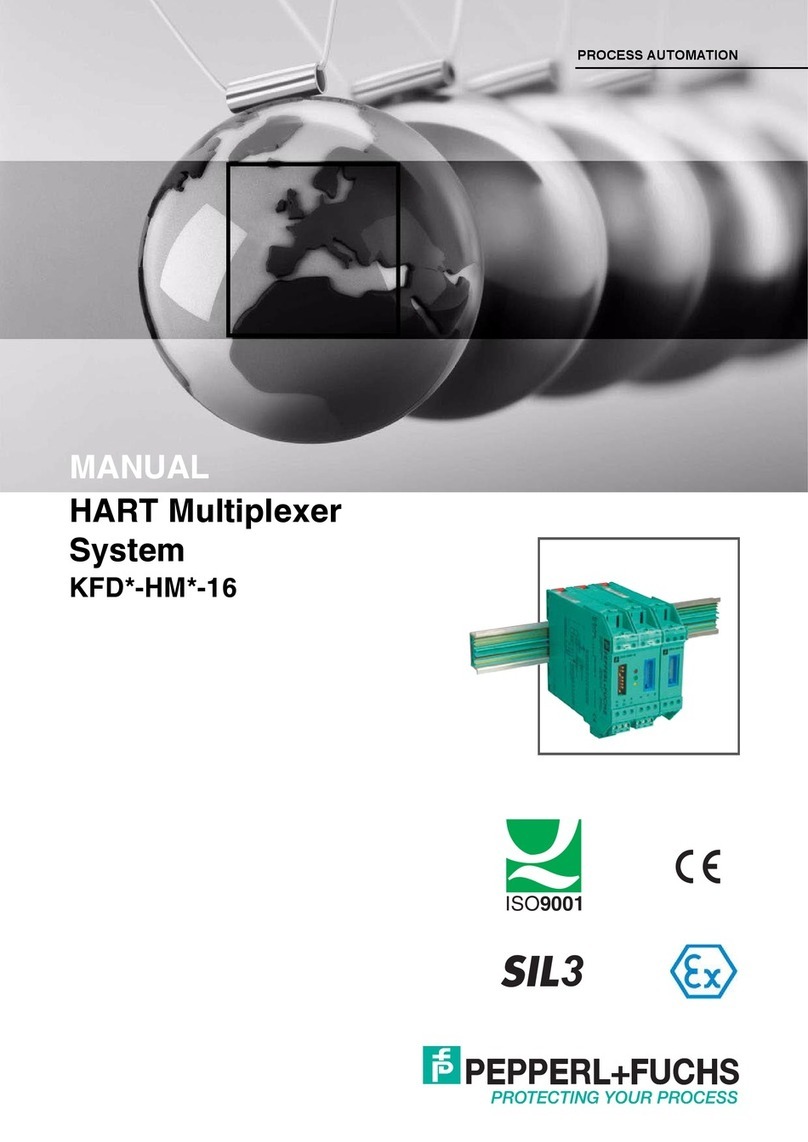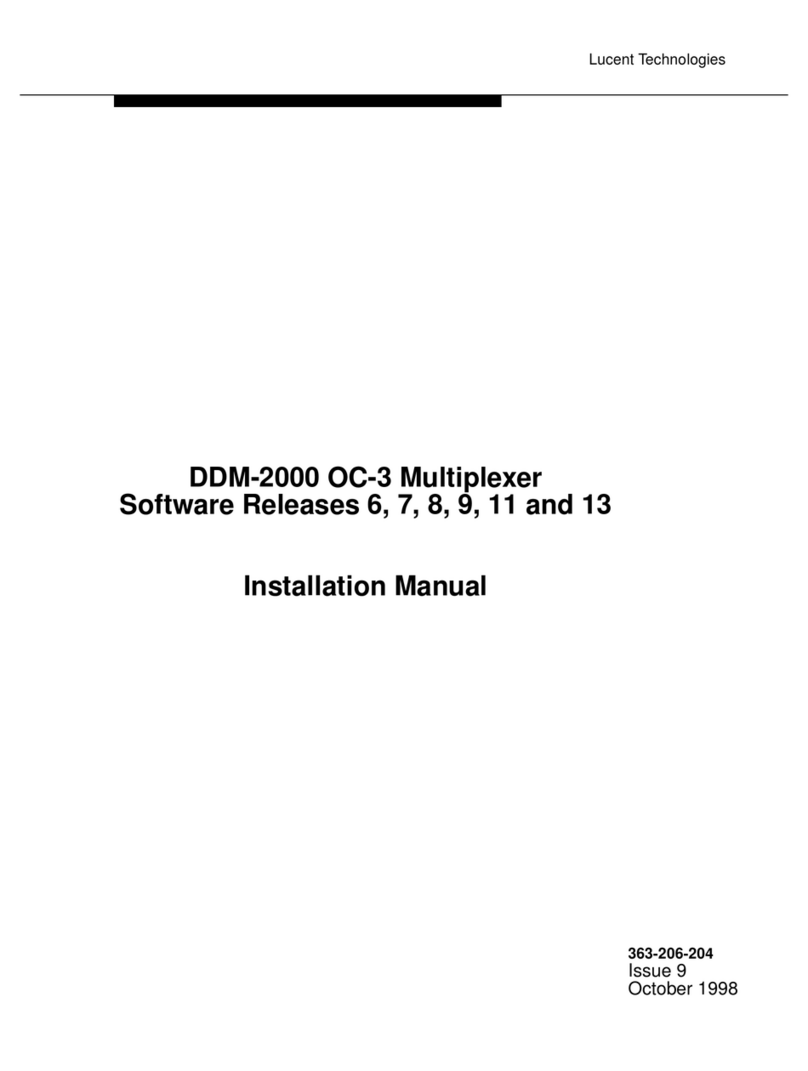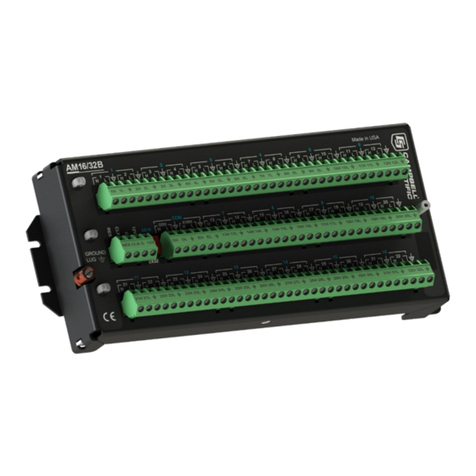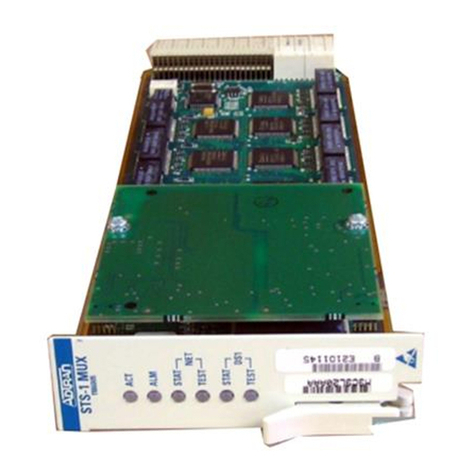Keithley 7701 User manual

Model 7701
User’s Guide
PA-769 Rev. B / 8-03
The Model 7701 can be used with Keithley
Models 2700, 2701, and 2750. All references
to the Model 27xx apply to the Models 2700,
2701, and 2750.
A GREATER MEASURE OF CONFIDENCE
Test Equipment Depot - 800.517.8431 - 99 Washington Street Melrose, MA 02176 - TestEquipmentDepot.com
99 Washington Street
Melrose, MA 02176
Phone 781-665-1400
Toll Free 1-800-517-8431
Visit us at www.TestEquipmentDepot.com

Safety Precautions
The following safety precautions should be observed before using
this product and any associated instrumentation. Although some in-
struments and accessories would normally be used with non-haz-
ardous voltages, there are situations where hazardous conditions
may be present.
This product is intended for use by qualified personnel who recog-
nize shock hazards and are familiar with the safety precautions re-
quired to avoid possible injury. Read and follow all installation,
operation, and maintenance information carefully before using the
product. Refer to the manual for complete product specifications.
If the product is used in a manner not specified, the protection pro-
vided by the product may be impaired.
The types of product users are:
Responsible body
is the individual or group responsible for the use
and maintenance of equipment, for ensuring that the equipment is
operated within its specifications and operating limits, and for en-
suring that operators are adequately trained.
Operators
use the product for its intended function. They must be
trained in electrical safety procedures and proper use of the instru-
ment. They must be protected from electric shock and contact with
hazardous live circuits.
Maintenance personnel
perform routine procedures on the product
to keep it operating properly, for example, setting the line voltage
or replacing consumable materials. Maintenance procedures are de-
scribed in the manual. The procedures explicitly state if the operator
may perform them. Otherwise, they should be performed only by
service personnel.
Service personnel
are trained to work on live circuits, and perform
safe installations and repairs of products. Only properly trained ser-
vice personnel may perform installation and service procedures.
Keithley products are designed for use with electrical signals that
are rated Measurement Category I and Measurement Category II, as
described in the International Electrotechnical Commission (IEC)
Standard IEC 60664. Most measurement, control, and data I/O sig-
nals are Measurement Category I and must not be directly connect-
ed to mains voltage or to voltage sources with high transient over-
voltages. Measurement Category II connections require protection
for high transient over-voltages often associated with local AC
mains connections. Assume all measurement, control, and data I/O
connections are for connection to Category I sources unless other-
wise marked or described in the Manual.
Exercise extreme caution when a shock hazard is present. Lethal
voltage may be present on cable connector jacks or test fixtures. The
American National Standards Institute (ANSI) states that a shock
hazard exists when voltage levels greater than 30V RMS, 42.4V
peak, or 60VDC are present.
A good safety practice is to expect
that hazardous voltage is present in any unknown circuit before
measuring.
Operators of this product must be protected from electric shock at
all times. The responsible body must ensure that operators are pre-
vented access and/or insulated from every connection point. In
some cases, connections must be exposed to potential human con-
tact. Product operators in these circumstances must be trained to
protect themselves from the risk of electric shock. If the circuit is
capable of operating at or above 1000 volts,
no conductive part of
the circuit may be exposed.
Do not connect switching cards directly to unlimited power circuits.
They are intended to be used with impedance limited sources.
NEVER connect switching cards directly to AC mains. When con-
necting sources to switching cards, install protective devices to lim-
it fault current and voltage to the card.
Before operating an instrument, make sure the line cord is connect-
ed to a properly grounded power receptacle. Inspect the connecting
cables, test leads, and jumpers for possible wear, cracks, or breaks
before each use.
When installing equipment where access to the main power cord is
restricted, such as rack mounting, a separate main input power dis-
connect device must be provided, in close proximity to the equip-
ment and within easy reach of the operator.
For maximum safety, do not touch the product, test cables, or any
other instruments while power is applied to the circuit under test.
ALWAYS remove power from the entire test system and discharge
any capacitors before: connecting or disconnecting cables or jump-
ers, installing or removing switching cards, or making internal
changes, such as installing or removing jumpers.
Do not touch any object that could provide a current path to the com-
mon side of the circuit under test or power line (earth) ground.Always
make measurements with dry hands while standing on a dry, insulated
surface capable of withstanding the voltage being measured.
The instrument and accessories must be used in accordance with its
specifications and operating instructions or the safety of the equip-
ment may be impaired.
Do not exceed the maximum signal levels of the instruments and ac-
cessories, as defined in the specifications and operating informa-
tion, and as shown on the instrument or test fixture panels, or
switching card.
When fuses are used in a product, replace with same type and rating
for continued protection against fire hazard.
Chassis connections must only be used as shield connections for
measuring circuits, NOT as safety earth ground connections.
If you are using a test fixture, keep the lid closed while power is ap-
plied to the device under test. Safe operation requires the use of a
lid interlock.
5/03
Test Equipment Depot - 800.517.8431 - 99 Washington Street Melrose, MA 02176 - TestEquipmentDepot.com

If a screw is present, connect it to safety earth ground using the
wire recommended in the user documentation.
The symbol on an instrument indicates that the user should re-
fer to the operating instructions located in the manual.
The symbol on an instrument shows that it can source or mea-
sure 1000 volts or more, including the combined effect of normal
and common mode voltages. Use standard safety precautions to
avoid personal contact with these voltages.
The symbol indicates a connection terminal to the equipment
frame.
The
WARNING
heading in a manual explains dangers that might
result in personal injury or death. Always read the associated infor-
mation very carefully before performing the indicated procedure.
The
CAUTION
heading in a manual explains hazards that could
damage the instrument. Such damage may invalidate the warranty.
Instrumentation and accessories shall not be connected to humans.
Before performing any maintenance, disconnect the line cord and
all test cables.
To maintain protection from electric shock and fire, replacement
components in mains circuits, including the power transformer, test
leads, and input jacks, must be purchased from Keithley Instru-
ments. Standard fuses, with applicable national safety approvals,
may be used if the rating and type are the same. Other components
that are not safety related may be purchased from other suppliers as
long as they are equivalent to the original component. (Note that se-
lected parts should be purchased only through Keithley Instruments
to maintain accuracy and functionality of the product.) If you are
unsure about the applicability of a replacement component, call a
Keithley Instruments office for information.
To clean an instrument, use a damp cloth or mild, water based
cleaner. Clean the exterior of the instrument only. Do not apply
cleaner directly to the instrument or allow liquids to enter or spill
on the instrument. Products that consist of a circuit board with no
case or chassis (e.g., data acquisition board for installation into a
computer) should never require cleaning if handled according to in-
structions. If the board becomes contaminated and operation is af-
fected, the board should be returned to the factory for proper
cleaning/servicing.
!
Test Equipment Depot - 800.517.8431 - 99 Washington Street Melrose, MA 02176 - TestEquipmentDepot.com

PA-769 Rev. B / 8-03
Model 7701
User’s Guide
Keithley Instruments, Inc.
28775 Aurora Road
Cleveland, Ohio 44139
(440) 248-0400
Fax: (440) 248-6168
www.keithley.com
The information in this section is organized as follows:
•Card configuration – schematic on page 2.
•Connections and wiring on page 4.
•Screw terminals on page 4.
•D-shell connectors on page 6.
•Wiring on page 7.
•Typical connections on page 12.
•Connection log on page 14.
•Operation on page 14.
•Channel assignments on page 15.
•System channel operation on page 15.
•Multiple channel operation on page 16.
•Applications on page 17.
•Service on page 25.
•Performance verification on page 25.
•Replaceable parts on page 25.
•Specifications on page 30.
Test Equipment Depot - 800.517.8431 - 99 Washington Street Melrose, MA 02176 - TestEquipmentDepot.com

2
Introduction
NOTE
The 7701 module can be used with Keithley Models 2700, 2701, and 2750. All references to the
Model 27xx apply to the Models 2700, 2701, and 2750.
The Model 7701 is a 32-channel high speed differential multiplexer module and has the following features:
• Voltage measurements (DC and AC).
• Frequency and period measurements.
• Normal ohms measurements:
• 2-wire ohms to test up to 32 DUT.
• 4-wire ohms to test up to 16 DUT. Normal
Ω
4 automatically pairs switches for four wire measurements —
n
+ 16.
• Common-side 4-wire ohms measurements – Configures the module to allow use of a common bus to perform 4-wire
ohms measurements on up to 32 DUT.
• Temperature applications (RTD or thermistor).
• 50-pin female D-Shell connector (DB-50) for channels 1 through 24.
• 25-pin female D-Shell connector (DB-25) for channels 25 through 32.
• Screw terminals and supplied jumpers to access the DMM of the Model 27xx mainframe.
WARNING
The Model 7701 is configurable to be connected to the internal DMM via the supplied
jumpers and the screw terminals. When connected to the internal DMM, all other
modules must be derated to 150VDC or 150Vrms (212V peak) for AC waveforms.
NOTE
The Model 7701 is shipped from the factory with the screw terminal jumpers NOT installed. See
“Screw terminals” to install the jumpers.
WARNING
Before operating the Model 27xx with an accessory card, verify that the card is properly
installed and the mounting screws are tightly fastened. If the mounting screws are not
properly connected, an electrical shock hazard may be present.
Card configuration – schematic
Figure 1 shows a simplified schematic diagram of the Model 7701 module. As shown, the Model 7701 has input channels that
are grouped into two banks of sixteen channels (thirty-two channels total). A backplane isolation relay is provided for each
bank. The first bank contains channels 1 through 16 while the second bank contains channels 17 through 32. Each input chan-
nel of the 32-channel multiplexer card is wired with separate inputs for HI/LO providing fully isolated inputs.
As shown in Figure 1, all Model 7701 channels are isolated from the DMM of the Model 27xx by screw terminals. Supplied
jumpers must be installed in the screw terminals to connect switching module channels to the DMM.
For added flexibility, the Model 7701 is equipped with four extra screw terminals. These user-configurable screw terminals are
hard-wired to the female DB-25 connector of the switching module. These screw terminals allow external input to bypass the
switching module channels.
Although the Model 7701 relays are the latching type (relays hold their state even after power has been removed), all relay
states are set to open a few seconds after either a power cycle or an *RST command is issued.
System channel operation (
ROUT:CLOS
command) is used to close measurement channels to connect a DUT to the DMM.
With a 2-wire function selected (i.e., DCV), system channels 1 through 32 can be closed. When one of these channels is
closed, channel 35 automatically closes to connect the channel to the DMM Input.
Test Equipment Depot - 800.517.8431 - 99 Washington Street Melrose, MA 02176 - TestEquipmentDepot.com

3
Figure 1
Simplified schematic for Model 7701
With a normal 4-wire function selected (i.e.,
Ω
4), system channels 1 through 16 can be closed. These 16 channels are paired to
channels 17 through 32 (channel 1 paired to channel 17, channel 2 paired to channel 18, and so on). When one of these system
channels is closed, its paired channel, and channels 33 and 34 also close to connect the DUT to the DMM.
With common-side (CSID) 4-wire ohms selected, system channels 1 through 32 can be measured by the DMM. For this ohms
mode, the module is to be configured as shown in Figure 12. With CSID ohms selected, channel 33 remains open and
channel 35 remains closed. In Figure 12, the bold lines show the signal path to test DUT1.
Backplane
Isolation
Backplane
Isolation
Screw
Terminals
External
Wiring
Access
User Configurable
Screw Terminals
Multiplexer 1
Multiplexer
The Model 7701 is rated for low-voltage applications.
When connecting the 7701 to the internal DMM via
the screw terminals, all other modules in the mainframe
must be derated to 150VDC or 150Vrms ( 1 V peak)
for AC waveforms.
P 5
P 4
P13
P1
P 5
P 4
P13
P1
MUX 1
HI DMM
HI
MUX 1
LO
MUX
HI
MUX
LO
DMM
SHI
DMM
SLO
DMM
LO
Notes:
= Jumper to be installed by
user to connect 7701
channels to DMM
(Figure 3).
Channel 1 HI
LO
Channel 16HI
LO
(Channels 15)
Channel 17 HI
LO
Channel 3 HI
LO
(Channels 1831)
HI
LO
Sense
HI
LO
Input
Channel 33
-Pole (Open)
4-Pole (Closed)
(See Note)
To Model
7xx DMM
Channel 35
(See Note)
Channel 34
(See Note)
HI
LO
HI
LO
Channels 3335 in this schematic refer to the designations used for
control and not actual available channels.
Channels 33, 34, and 35 can be individually controlled using multiple
channel operation (ROUT:MULT commands). For more information,
see Section of the Model 7xx Users Manual.
Test Equipment Depot - 800.517.8431 - 99 Washington Street Melrose, MA 02176 - TestEquipmentDepot.com

4
Dual independent multiplexers
WARNING
Multiple channel operation should only be performed by experienced test engineers who
recognize the dangers associated with multiple channel closures.
Multiple channel operation (
ROUT:MULT:CLOS
command) allows individual control of switching module channels. Multiple
channel operation allows the switching module to be configured as two independent multiplexers. The Model 7701 is normally
used as a single 1
×
32 multiplexer, but it can also be configured as two 1
×
16 multiplexers.
In Figure 1, the open position of channel 33 is shown. When channel 33 is closed, Multiplexer 1 (channels 1 through 16) are
isolated from Multiplexer 2 (channels 16 through 32).
For the dual multiplexer configuration, only Multiplexer 1 channels can be internally connected to the DMM of the
Model 27xx. Closing channel 35 allows channels 1 through 16 to be measured by the DMM.
When using the dual multiplexer configuration, Multiplexer 2 must be isolated from the sense terminals of the DMM. This can
be done by keeping channel 34 open, or by not installing the screw terminal jumpers to DMM Sense.
Connections and wiring
WARNING
The following information is intended for qualified service personnel. Do not make
switching module connections unless qualified to do so.
To prevent electric shock that could result in serious injury or death, adhere to the
following safety precautions:
• Before removing or installing the switching module in the mainframe, make sure the
mainframe is turned off and disconnected from line power.
• Before making or breaking connections, make sure power is removed from all external
circuitry.
• Do not connect signals that may exceed the maximum specifications of the Model 7701.
Specifications are provided at the end of this section.
WARNING
The Model 7701 is configurable to be connected to the internal DMM via the supplied
jumpers and the screw terminals. When connected to the internal DMM, all other
modules must be derated to 150VDC or 150Vrms (212V peak) for AC waveforms.
Screw terminals
The screw terminals of the Model 7701 are shown in Figure 2. As shown, screw terminals are provided to connect the switch-
ing module channels to the DMM. User-configurable screw terminals are also provided to allow external input to bypass the
switching module channels.
Four jumpers are supplied with the Model 7701 for use with the screw terminals. As shown in Figure 2, the Model 7701 is
shipped with the jumpers not installed. With the jumpers not installed, all input to the Model 7701 is electrically isolated from
the DMM.
Test Equipment Depot - 800.517.8431 - 99 Washington Street Melrose, MA 02176 - TestEquipmentDepot.com

5
Figure 2
Model 7701 screw terminals
DMM HI
MUX 1 HI
DMM SHI
MUX 2 HI
DMM SLO
MUX 2 LO
DMM LO
MUX 1 LO
P12 P13 P24 P25
DMM HI
MUX 1 HI
DMM SHI
MUX 2 HI
DMM SLO
MUX 2 LO
DMM LO
MUX 1 LO
P12 P13 P24 P25
User-Configurable
Screw Terminals
Screw Terminals to
Connect 7701
Channels to DMM
Test Equipment Depot - 800.517.8431 - 99 Washington Street Melrose, MA 02176 - TestEquipmentDepot.com

6
Connecting Model 7701 channels to DMM
Perform the following steps to internally connect the channels of the Model 7701 to the DMM of the Model 27xx:
1. Remove the top cover of the Model 7701. It is secured to the module case by a single screw.
2. Install the four supplied #22 AWG jumpers in the screw terminals as shown in Figure 3. Position the jumpers to allow clear-
ance for the top cover and make sure the jumper wires do not come in contact with each other or other electrical conductors.
3. Replace the top cover.
Figure 3
Jumper installation to connect 7701 channels to DMM
D-shell connectors
Figure 4 shows the pin numbers for the Model 7701 rear panel connectors. The 50-pin D-shell is used to access channels 1
through 24, and Multiplexer 1 terminals. The 25-pin D-shell is used to access channels 25 through 32, and Multiplexer 2
terminals. The user-configurable screw terminals are also accessed at the 25-pin D-shell. Terminal identification for the female
connector pins is provided in Table 1.
Figure 4
Rear view – Model 7701 pinouts
DMM HI
MUX 1 HI
DMM SHI
MUX 2 HI
DMM SLO
MUX 2 LO
DMM LO
MUX 1 LO
Connects HI terminals of Multiplexer 1
channels (1 through 16) to DMM Input HI.
A
Jumper A
Jumper B Connects HI terminals of Multiplexer 2
channels (17 through 32) to DMM Sense HI.
Jumper C Connects LO terminals of Multiplexer 2
channels (17 through 32) to DMM Sense LO.
Jumper D Connects LO terminals of Multiplexer 1
channels (1 through 16) to DMM Input LO.
Jumper
(1 of 4)
B
C
D
1
17
18
34
50
33
13 1
1425
50-Pin D-Shell Connector (Female) 25-Pin D-Shell Connector (Female)
Test Equipment Depot - 800.517.8431 - 99 Washington Street Melrose, MA 02176 - TestEquipmentDepot.com

7
Wiring
NOTE
The Model 7701 is shipped with plastic connector covers installed on the D-shell connectors. Each
cover is secured to the connector by two screws. After removing a connector cover, retain it and
the screws for future use. Any unused D-shell connector must have the connector cover installed.
The Model 7701 is supplied with one 50-pin male IDC ribbon cable connector, and one 25-pin male IDC ribbon cable connec-
tor. These ribbon cable connectors mate to the D-shell connectors of the switching module.
WARNING
When using IDC ribbon cable connections, DO NOT exceed 42V anywhere in the test
system or at the front panel inputs of the Model 27xx. For higher voltage applications,
use larger wire (up to #20 AWG) and solder cup D-shell connectors.
There are two connector kits that have connectors that can be used with the Model 7701:
•
Model 7790 ribbon cable adapter kit
— Contains one female DB-50, one male DB-50 and one male DB-25 IDC
ribbon cable connectors. The two male IDC connectors mate to the D-shell connectors on the Model 7701.
•
Model 7789 50/25-pin solder cup connector kit
— Contains one male DB-50 and one male DB-25 solder cup con-
nectors. These connectors mate to the D-shell connectors on the Model 7701.
Table 1
D-shell pin identification
50-pin D-shell (DB-50)
Pin
7701
Terminal Pin
7701
Terminal Pin
7701
Terminal Pin
7701
Terminal Pin
7701
Terminal
1 Ch 1 Hi 11 Ch 16 Hi 21 Ch 6 Lo 31 Ch 21 Lo 41 Ch 12 Hi
2 Ch 2 Lo 12 Ch 17 Lo 22 Ch 8 Hi 32 Ch 23 Hi 42 Ch 13 Lo
3 Ch 4 Hi 13 Ch 19 Hi 23 Ch 9 Lo 33 Ch 24 Lo 43 Ch 15 Hi
4 Ch 5 Lo 14 Ch 20 Lo 24 Ch 11 Hi 34 Ch 1 Lo 44 Ch 16 Lo
5 Ch 7 Hi 15 Ch 22 Hi 25 Ch 12 Lo 35 Ch 3 Hi 45 Ch 18 Hi
6 Ch 8 Lo 16 Ch 23 Lo 26 Ch 14 Hi 36 Ch 4 Lo 46 Ch 19 Lo
7 Ch 10 Hi 17 Mux 1 Hi 27 Ch 15 Lo 37 Ch 6 Hi 47 Ch 21 Hi
8 Ch 11 Lo 18 Ch 2 Hi 28 Ch 17 Hi 38 Ch 7 Lo 48 Ch 22 Lo
9 Ch 13 Hi 19 Ch 3 Lo 29 Ch 18 Lo 39 Ch 9 Hi 49 Ch 24 Hi
10 Ch 14 Lo 20 Ch 5 Hi 30 Ch 20 Hi 40 Ch 10 Lo 50 Mux 1 Lo
25-pin D-shell (DB-25)
Pin
7701
Terminal Pin
7701
Terminal Pin
7701
Terminal Pin
7701
Terminal
1 Ch 25 Hi 7 Ch 31 Hi 14 Ch 25 Lo 20 Ch 31 Lo
2 Ch 26 Hi 8 Ch 32 Hi 15 Ch 26 Lo 21 Ch 32 Lo
3 Ch 27 Hi 9 Mux 2 Hi 16 Ch 27 Lo 22 Mux 2 Lo
4 Ch 28 Hi 10, 11 — 17 Ch 28 Lo 23 —
5 Ch 29 Hi 12 P12 18 Ch 29 Lo 24 P24
6 Ch 30 Hi 13 P13 19 Ch 30 Lo 25 P25
Test Equipment Depot - 800.517.8431 - 99 Washington Street Melrose, MA 02176 - TestEquipmentDepot.com

8
IDC ribbon cable connections
Connect an appropriate length of 50-conductor IDC ribbon cable to a 50-pin male D-shell IDC connector, and connect an
appropriate length of 25-conductor IDC ribbon cable to a 25-pin male D-shell IDC connector. Table 2 and Figure 5 provides
terminal identification for the 50-pin ribbon cable connections. Table 3 and Figure 6 provides terminal identification for the
25-pin ribbon cable connections.
The connectors of the prepared ribbon cable assemblies mate to the 50- and 25-pin D-shell connectors of the Model 7701
(Figure 7). Make sure an unused D-shell connector has the connector cover installed.
Table 2
Terminal identification for 50-conductor IDC ribbon cable and 7701 DB-50 connector
Ribbon Cable*: 7701 DB-50 Ribbon Cable*: 7701 DB-50
Conductor Color Terminal Pin # Conductor Color Terminal Pin #
1 Brown Ch 1 Hi 1 26 Blue Ch 13 Lo 42
2 Red Ch 1 Lo 34 27 Violet Ch 14 Hi 26
3 Orange Ch 2 Hi 18 28 Grey Ch 14 Lo 10
4 Yellow Ch 2 Lo 2 29 White Ch 15 Hi 43
5 Green Ch 3 Hi 35 30 Black Ch 15 Lo 27
6 Blue Ch 3 Lo 19 31 Brown Ch 16 Hi 11
7 Violet Ch 4 Hi 3 32 Red Ch 16 Lo 44
8 Grey Ch 4 Lo 36 33 Orange Ch 17 Hi 28
9 White Ch 5 Hi 20 34 Yellow Ch 17 Lo 12
10 Black Ch 5 Lo 4 35 Green Ch 18 Hi 45
11 Brown Ch 6 Hi 37 36 Blue Ch 18 Lo 29
12 Red Ch 6 Lo 21 37 Violet Ch 19 Hi 13
13 Orange Ch 7 Hi 5 38 Grey Ch 19 Lo 46
14 Yellow Ch 7 Lo 38 39 White Ch 20 Hi 30
15 Green Ch 8 Hi 22 40 Black Ch 20 Lo 14
16 Blue Ch 8 Lo 6 41 Brown Ch 21 Hi 47
17 Violet Ch 9 Hi 39 42 Red Ch 21 Lo 31
18 Grey Ch 9 Lo 23 43 Orange Ch 22 Hi 15
19 White Ch 10 Hi 7 44 Yellow Ch 22 Lo 48
20 Black Ch 10 Lo 40 45 Green Ch 23 Hi 32
21 Brown Ch 11 Hi 24 46 Blue Ch 23 Lo 16
22 Red Ch 11 Lo 8 47 Violet Ch 24 Hi 49
23 Orange Ch 12 Hi 41 48 Grey Ch 24 Lo 33
24 Yellow Ch 12 Lo 25 49 White Mux 1 Hi 17
25 Green Ch 13 Hi 9 50 Black Mux 1 Lo 50
*50-conductor IDC ribbon cable is available from Keithley, Part #15020.
Test Equipment Depot - 800.517.8431 - 99 Washington Street Melrose, MA 02176 - TestEquipmentDepot.com

9
Figure 5
50-conductor ribbon cable terminal identification
26 Blue
27 Violet 28 Grey
29 White HI Ch 15
LO
30 Black
HI Ch 14
LO
31 Brown 32 Red
33 Orange 34 Yellow HI Ch 17
LO
35 Green HI Ch 18
LO
36 Blue
37 Violet 38 Grey
39 White HI Ch 20
LO
40 Black
41 Brown HI Ch 21
LO
42 Red
43 Orange 44 Yellow
45 Green 46 Blue
47 Violet 48 Grey
49 White 50 Black
1 Brown HI Ch 1
LO
2 Red
3 Orange 4 Yellow HI Ch 2
LO
HI Ch 3
LO
6 Blue
7 Violet 8 Grey
9 White HI Ch 5
LO
10 Black
11 Brown HI Ch 6
LO
12 Red
13 Orange 14 Yellow
15 Green 16 Blue
17 Violet 18 Grey
19 White 20 Black
21 Brown 22 Red
23 Orange 24 Yellow
25 Green
HI Ch 8
LO
5 Green
IDC Ribbon Cable —50-Conductor
HI Ch 11
LO
HI Ch 12
LO
HI Ch 4
LO
HI Ch 10
LO
HI Ch 13
LO
HI Ch 16
LO
HI Ch 19
LO
HI Ch 22
LO
HI Ch 23
LO
HI Ch 24
LO
HI Multiplexer 1
LO
HI Ch 7
LO
HI Ch 9
LO
50-Pin D-Shell
Male IDC
Test Equipment Depot - 800.517.8431 - 99 Washington Street Melrose, MA 02176 - TestEquipmentDepot.com

10
Figure 6
25-conductor ribbon cable terminal identification
Table 3
Terminal identification for 25-conductor IDC ribbon cable and 7701 DB-25 connector
Ribbon Cable*: 7701 DB-25 Ribbon Cable*: 7701 DB-25
Conductor Color Terminal Pin # Conductor Color Terminal Pin #
1 Brown Ch 25 Hi 1 14 Yellow Ch 31 Lo 20
2 Red Ch 25 Lo 14 15 Green Ch 32 Hi 8
3 Orange Ch 26 Hi 2 16 Blue Ch 32 Lo 21
4 Yellow Ch 26 Lo 15 17 Violet Mux 2 Hi 9
5 Green Ch 27 Hi 3 18 Grey Mux 2 Lo 22
6 Blue Ch 27 Lo 16 19 White —
—
7 Violet Ch 28 Hi 4 20 Black —
—
8 Grey Ch 28 Lo 17 21 Brown —
—
9 White Ch 29 Hi 5 22 Red P24 24
10 Black Ch 29 Lo 18 23 Orange P12 12
11 Brown Ch 30 Hi 6 24 Yellow P25 25
12 Red Ch 30 Lo 19 25 Green P13 13
13 Orange Ch 31 Hi 7
*25-conductor IDC ribbon cable is available from Keithley, Part #15025.
1 Brown HI Channel 25
LO
2 Red
3 Orange 4 Yellow HI Channel 26
LO
HI Channel 27
LO
6 Blue
7 Violet 8 Grey
9 White HI Channel 29
LO
10 Black
11 Brown HI Channel 30
LO
12 Red
13 Orange 14 Yellow
15 Green 16 Blue
17 Violet 18 Grey
19 White 20 Black
21 Brown 22 Red
23 Orange 24 Yellow
25 Green
HI Channel 32
LO
5 Green
IDC Ribbon Cable —25-Conductor
HI Channel 28
LO
HI Channel 31
LO
HI Multiplexer 2
LO
P24
P12
P25
P13
25-Pin D-Shell
Male IDC
Test Equipment Depot - 800.517.8431 - 99 Washington Street Melrose, MA 02176 - TestEquipmentDepot.com

11
Figure 7
Connecting ribbon cable assembly
Solder cup cable connections
Make all connections to D-shell male solder cup connectors using the correct wire size up to 20 AWG. Terminal identification
for the 50-pin D-shell connector is provided in Table 1 and Table 2. Terminal identification for the 25-pin D-shell connector is
provided in Table 1 and Table 3. Make sure to add supplementary insulation around the harness for voltages above 42V peak
(Figure 8).
WARNING
All solder cup wiring must be rated for the maximum voltage in the system. For exam-
ple, if 150V is applied to the front terminals of the DMM, All matrix module wiring
must be rated for 150V.
A connector cover must be installed on an unused D-shell connector. If the connector is
left open, an electrical shock hazard may be present.
Figure 8
Connecting solder cup cable assembly
Install plastic cover
over unused connector
using two #4-40 screws.
KEITHLEY
CONNECTOR COVER
Warning: When using ribbon cable,
DO NOT exceed 4 volts
anywhere in the test system
or at the front panel inputs
of the Model 7xx.
Supplementary
Insulation
Install plastic cover
over unused connector
using two #4-40 screws.
KEITHLEY
CONNECTOR COVER
Test Equipment Depot - 800.517.8431 - 99 Washington Street Melrose, MA 02176 - TestEquipmentDepot.com

12
Typical connections
The following examples show typical wiring connections for the following types of measurements:
•
Ω
2-Wire and thermistor connections, Figure 9.
•
Ω
4-Wire and RTD connections, Figure 10.
• Voltage connections (AC or DC), Figure 11.
Figure 9
Ω
2-Wire and thermistor connections
Figure 10
Ω
4-Wire and RTD connections
Column 1
HI
LO
Column 32
HI
LO
(Columns 2 31) Resistors or
Thermistors
Column 1
HI
LO
Column 16
HI
LO
(Columns 2 15)
Column 17
HI
LO
Column 32
HI
LO
(Columns 18 31)
Resistor or
4-Wire RTD
Resistor or
4-Wire RTD
Test Equipment Depot - 800.517.8431 - 99 Washington Street Melrose, MA 02176 - TestEquipmentDepot.com

13
Figure 11
Voltage connections (DC or AC)
Column 1
HI
LO
Column 32
HI
LO
(Columns 2 31)
+
+
DC Voltage AC Voltage
Test Equipment Depot - 800.517.8431 - 99 Washington Street Melrose, MA 02176 - TestEquipmentDepot.com

14
Connection log
Make a copy of Table 4 and affix it to the cover of the Model 7701. Use this to record connection information and channel
descriptions as needed.
Operation
Detailed information to close and open switching module channels are provided in Section 2 of the Model 2700 or 2750 User’s
Manual. The following summarizes basic operation, and provides operating information specific to the Model 7701.
Table 4
Connection log Model 7701
Channel Color Description Description Color Channel
MUX 1 H P12
L P13
MUX 2 H P24
L P25
CH1 HH
CH17
LL
CH2 HH
CH18
LL
CH3 HH
CH19
LL
CH4 HH
CH20
LL
CH5 HH
CH21
LL
CH6 HH
CH22
LL
CH7 HH
CH23
LL
CH8 HH
CH24
LL
CH9 HH
CH25
LL
CH10 HH
CH26
LL
CH11 HH
CH27
LL
CH12 HH
CH28
LL
CH13 HH
CH29
LL
CH14 HH
CH30
LL
CH15 HH
CH31
LL
CH16 HH
CH32
LL
Test Equipment Depot - 800.517.8431 - 99 Washington Street Melrose, MA 02176 - TestEquipmentDepot.com

15
Channel assignments
The Model 2700 has two slots for switching modules and the Model 2750 has five slots. To control the appropriate switching
module, the slot number must be included with the switching module channel number when you specify a channel. The chan-
nel assignment is formatted as follows:
SCH where: S is the slot number
CH is the channel number
Examples:
101 = Slot 1, Channel 1
210 = Slot 2, Channel 10
506 = Slot 5, Channel 6 (Model 2750)
NOTE
For remote operation, the 3-digit channel assignment is included in the channel list parameter for
the commands.
System channel operation
System channel operation is used to connect measurement channels to the Model 27xx DMM. With 2-wire function selected,
system channels 1 through 32 can be closed. When one of these channels is closed, channel 35 automatically closes to connect
the measurement channel to the DMM Input.
With a 4-wire function selected, system channels 1 through 16 can be closed. When one of these channels is closed, its paired
channel closes, and the backplane relays for sense and input (channels 34 and 35) also close.
For a 4-wire function, channels are paired as follows:
System channel operation for the Model 7701 is summarized as follows:
• The
/
keys on the Model 27xx DMM can be used to close a system channel.
• The CLOSE key can be used to close a system channel. For the Model 2701/2750 and later versions of the
Model 2700, use the SINGLE option of the CLOSE key.
• Use the OPEN key to open all channels in the test system. For the Model 2701/2750 and later versions of the
Model 2700, use the ALL option of the OPEN key.
• For remote operation, the following commands are used for system channel operation:
ROUT:CLOS <clist>
Close specified system channel.
ROUT:CLOS?
Returns the closed system channel.
ROUT:CLOS:STAT? <clist>
Query closed channels in list (1 = closed).
ROUT:OPEN:ALL
Open all channels.
Common-side (CSID) 4-wire ohms
The Model 7701 can be configured to use a common bus to perform 4-wire ohms measurements on up to 32 DUT. Details of
CSID operation is provided in the application for Common-side 4-wire ohms measurements on page 17.
CH1 and CH17 CH5 and CH21 CH9 and CH25 CH13 and CH29
CH2 and CH18 CH6 and CH22 CH10 and CH26 CH14 and CH30
CH3 and CH19 CH7 and CH23 CH11 and CH27 CH15 and CH31
CH4 and CH20 CH8 and CH24 CH12 and CH28 CH16 and CH32
Test Equipment Depot - 800.517.8431 - 99 Washington Street Melrose, MA 02176 - TestEquipmentDepot.com

16
Amps measurements
The 7701 module does not support amps measurements. System channel operation cannot be used to close channels while an
amps function (DCI or ICI) is selected.
If an amps function (DCI or ACI) is selected and you attempt to close a system channel, the message “NO AMPS CHAN” will
be displayed briefly. For remote programming, error -222 (Parameter data out of range) is generated. Example:
SYST:PRES
‘ Restores system preset defaults.
SENS:FUNC ‘CURR:DC’
‘ Selects DCI function.
ROUT:CLOS (@101)
‘ Attempts to close system channel 101 – Generates error -222.
If a system channel is already closed and you attempt to select the DCI or ACI function, the message “INVALID FUNC” will
be displayed briefly. For remote programming, error -221 (Settings conflict) is generated. Example:
SYST:PRES
‘ Restores system preset defaults.
ROUT:CLOS (@101)
‘ Close system channel 101.
SENS:FUNC ‘CURR:DC’
‘ Attempts to select DCI function – Generates error -221.
Making amps measurements
– In order to perform amps measurements, you must use the front panel inputs of the 27xx
mainframe. You can still use the 7701 module for other aspects of the test (such as controlling a bias supply for DUT), but you
must use multiple channel operation to close channels. Example:
NOTE
In order to use the front panel inputs, make sure the INPUT switch is in the out (F) position.
SYST:PRES
‘ Restores system preset defaults.
ROUT:MULT:CLOS (@101)
‘ Closes channel 101.
SENS:FUNC ‘CURR:DC’
‘ Selects DCI function – Legal operation.
Multiple channel operation
WARNING
Multiple channel operation should only be performed by experienced test engineers who
recognize the dangers associated with multiple channel closures.
Multiple channel operation provides independent control of switching module channels (1 through 35). When you close or
open a multiple channel, only the specified channel (or channels) will close or open. Other closed or open channels are not
affected.
Multiple channel operation for the Model 7701 is summarized as follows:
• For earlier versions of the Model 2700, multiple channel operation is not available from the front panel (remote
operation only).
• For the Model 2701/2750 and later versions of the Model 2700, the MULTI option of the CLOSE key can be used
to close a channel.
• For the Model 2701/2750 and later versions of the Model 2700, the MULTI option of the OPEN key can be used to
open a channel. The ALL option of the OPEN key opens all channels.
ROUT:MULT:CLOS <clist>
Close specified channels (unlisted channels not affected).
ROUT:MULT:OPEN <clist>
Open specified channels (unlisted channels not affected).
ROUT:MULT:CLOS?
Returns list of all closed channels.
ROUT:MULT:CLOS:STAT? <clist>
Query closed channels in list (1 = closed).
You can also use the following command to open all channels:
ROUT:OPEN:ALL
Open all channels.
Test Equipment Depot - 800.517.8431 - 99 Washington Street Melrose, MA 02176 - TestEquipmentDepot.com

17
Applications
Common-side 4-wire ohms measurements
When using 4-wire ohms measurements and system channel operation, up to 16 DUT can be tested by the DMM. By using
common-side (CSID) 4-wire ohms mode and the user configurable screw terminals, up to 32 DUT can be measured using
4-wire ohms. Such a test system is shown in Figure 12.
As shown in Figure 12, all 32 DUT are connected to a common metal bus. The bus is connected directly to Input HI and Sense
HI of the DMM via the user-configurable screw terminals. The 32 measurement channels can then be used to connect the other
side of each DUT to Input LO and Sense LO of the DMM. Jumper installation for this test system is shown in Figure 13.
Figure 12
Common-side 4-wire test system (common-side 4-wire ohms mode)
Ch 1
DUT1
DUT16
DUT17
DUT3
DUT
P 5
P 4
P13
P1
HI
LO
Ch 16
HI
LO
(Ch 15)
Ch 17
Ch 3
(Ch 1831)
HI
LO
Sense
HI
LO
Input
Ch 33
(Open)
Ch 35
Ch 34
HI
LO
HI
LO
Sense LO
Input LO
DMM
Sense HI
Input HI
HI
LO
Sense
HI
LO
Input
DMM
Equivalent Circuit
System channel 1 closed to perform 4-wire CSID
ohms measurement on DUTI.
Note: Installation of the four screw terminal jumpers
(A through D) is shown in Figure 13.
Common-Side
Bus
Jumper A
Jumper B
Jumper C
Jumper D
= Signal path to measure DUT1
Test Equipment Depot - 800.517.8431 - 99 Washington Street Melrose, MA 02176 - TestEquipmentDepot.com
Other manuals for 7701
1
Table of contents
Other Keithley Multiplexer manuals
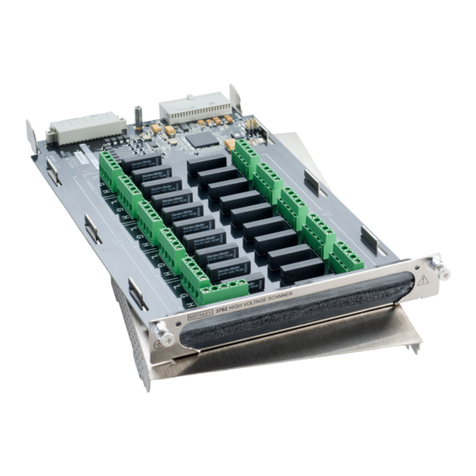
Keithley
Keithley 3706A User manual
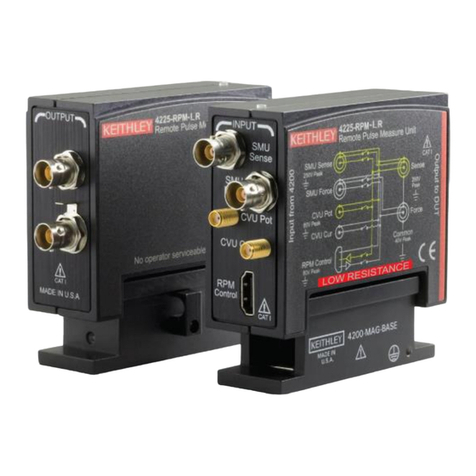
Keithley
Keithley 4225-RPM User manual

Keithley
Keithley 7710 User manual
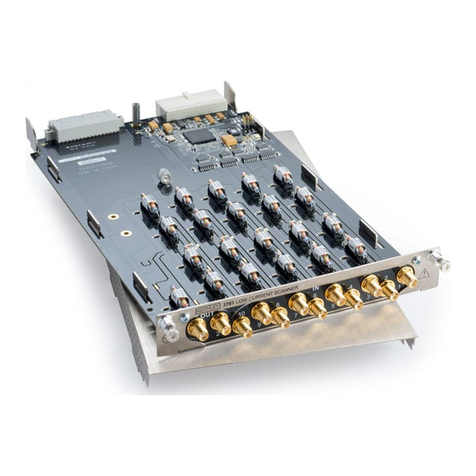
Keithley
Keithley 3761 User manual
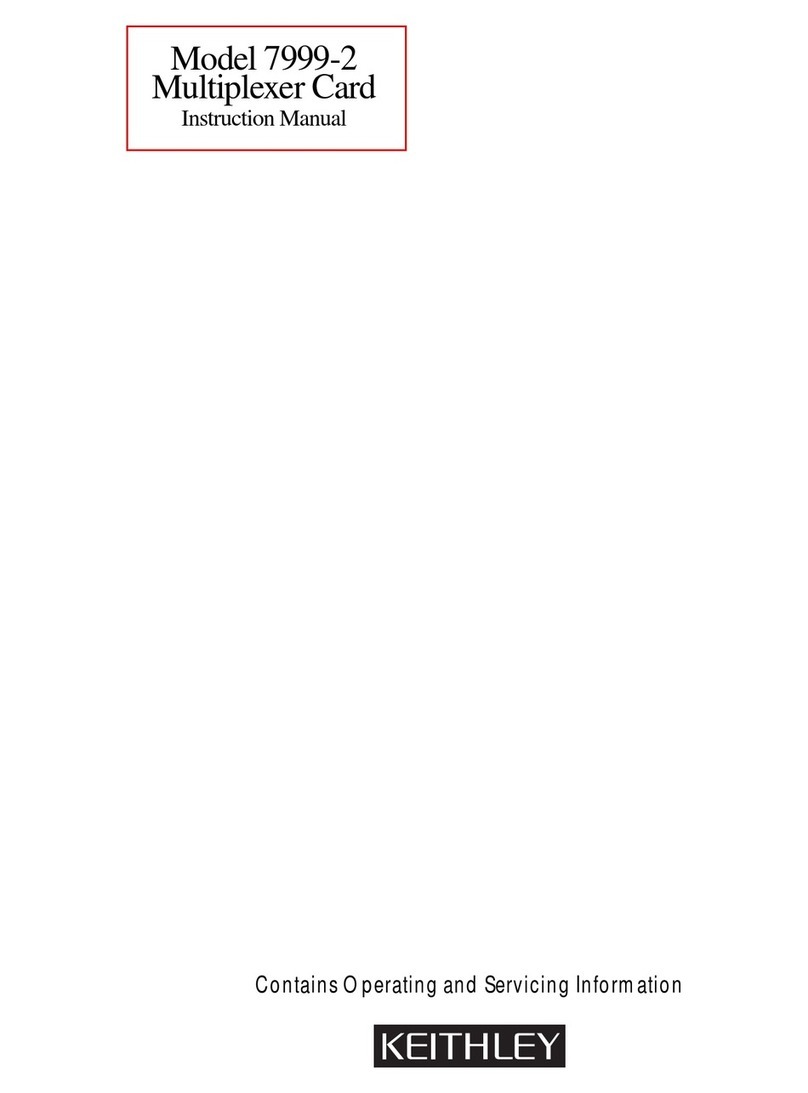
Keithley
Keithley 7999-2 User manual

Keithley
Keithley 7711 User manual
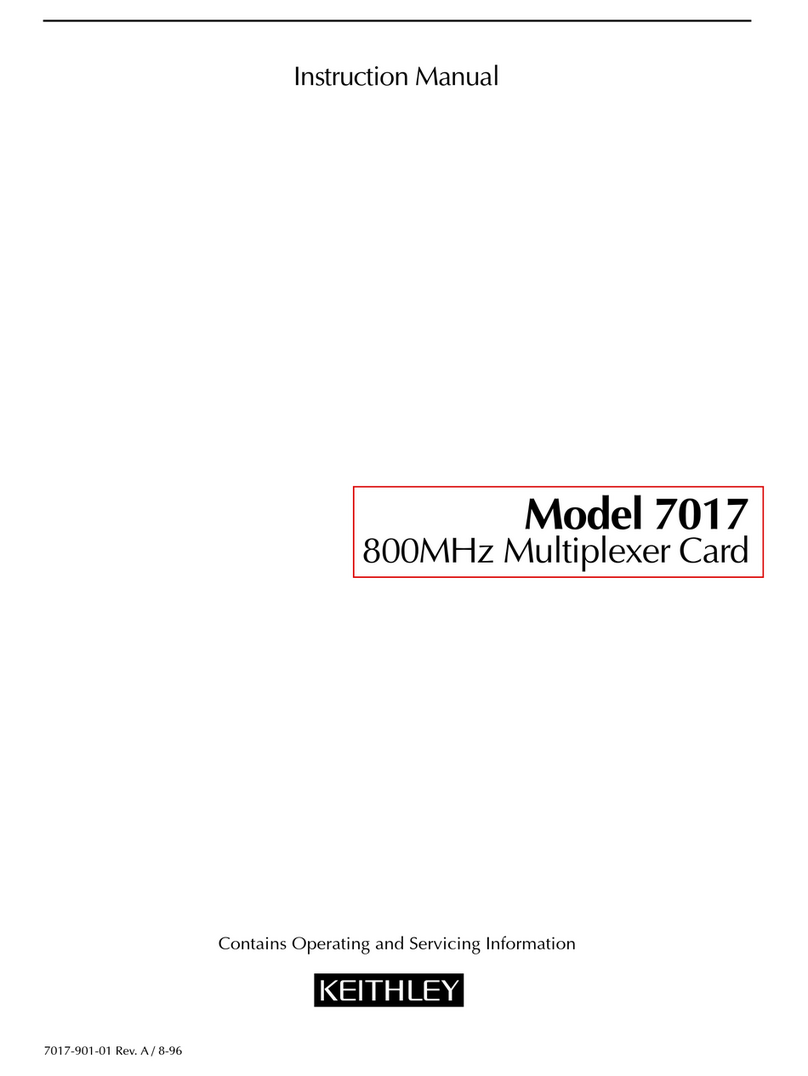
Keithley
Keithley 7017 User manual

Keithley
Keithley 7702 User manual

Keithley
Keithley 7708 User manual

Keithley
Keithley EXP-16 User manual

